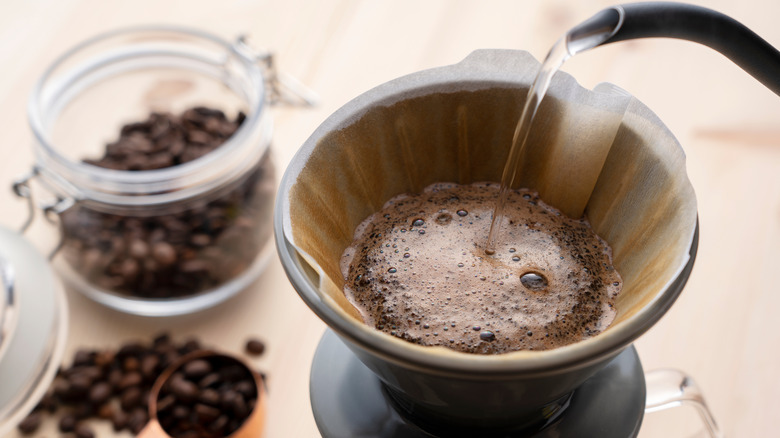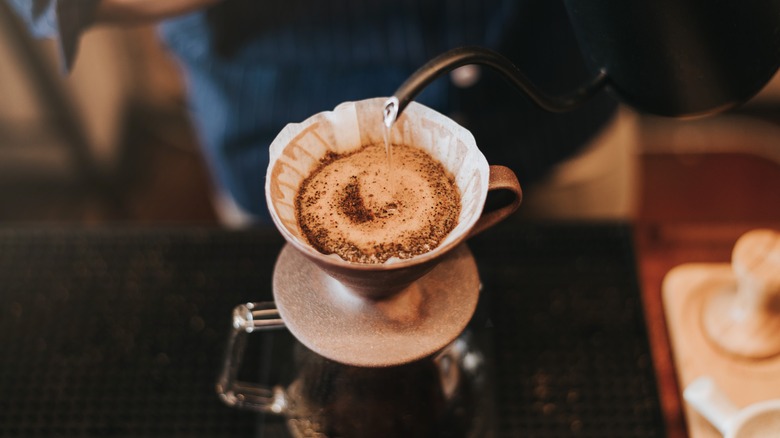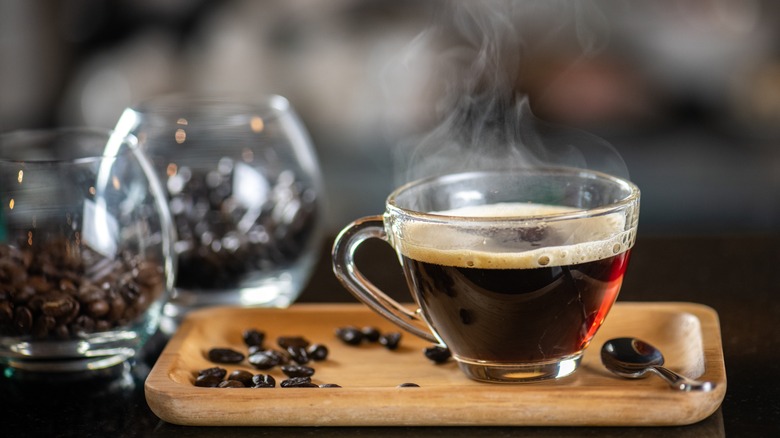Why You Should Start Wetting Your Coffee Filter Before Each Brew
Coffee is an essential component of many people's morning routine. Motivated by equal portions of habit, necessity, and joy, a good cup of coffee can be responsible for setting the tone for the day. While that might seem dramatic, consider a quaff that's gritty, weak, too strong, or bitter, and you'll understand that the best brew isn't just a hot beverage, it's a soulful experience.
If you have a deep love of java, mastering proper brewing techniques means paying attention to the finer points of the craft, such as grind and type of coffee. Whether you use an automatic drip machine or cultivate your brew via pour-over, you'll also need to understand the benefits of wetting your coffee filter before each brew. While it's not talked about as often as other aspects of coffee making, coffee connoisseurs often mention this little tidbit when offering advice for producing the perfect cup of brain juice.
Reasons to wet your coffee filter before making your brew
A wet filter performs more consistently than a dry one. Have you ever made a cup of pour-over coffee? If you have, you've likely seen this mechanism at work. When you begin to add water to the coffee grounds in a dry filter, the water rushes through quickly. That means it's mostly water making it to the other side. After the grounds and the filter become saturated, however, the water pools inside the grounds, traveling through the coffee more slowly and extracting maximum flavor as it does. (There's been some debate as to whether the shape of your coffee filter matters; one 2019 preliminary study conducted by the UC Davis Coffee Center suggests conical filters are a better choice for flavor preservation.)
Furthermore, because dry paper is absorbent, a dry filter sucks up the initial blast of flavors produced when the water hits the grounds. That means those first golden drops of liquid sunshine go into your filter instead of into your cup. That should be a recorded crime, right?
Another reason to wet your filter is to contain the coffee particles. A dry coffee filter doesn't adhere to the sides of the filter holder, but instead kind of perches within the cone. When you pre-moisten the paper, it settles into position and creates a barrier around the edges of the filter. This seal helps prevent fine grounds from breaching over the edge of the filter and down to your cup.
Other benefits of wetting your coffee filter
Temperature control is also in play here. Taking the additional step of wetting your coffee filter before each brew helps create a more uniform temperature for your coffee. Before adding grounds to your filter, run hot water through the paper. It's best to run hot water over the filter holder, too. Allow the water to travel through the filter and holder into your cup. Then dump the water out. At this point, all supplies will be pre-warmed so your brewed coffee will more easily maintain its heat.
Coffee aficionados argue that wetting your filter before brewing serves another important purpose, too. Think of it as washing it before use. Moistening the paper removes dust and chemicals left behind from the manufacturing process. Without the rinse, these flavors may be infused into your cup of joe. Therefore, pre-washing can translate into a more enjoyable and less papery flavor.
This idea isn't new and doesn't pertain exclusively to coffee making, by the way. Scientists make it a regular practice to wet paper filters before putting them into a funnel in the lab, with the understanding that it improves efficiency and precision while performing experiments. If the scientists see the value, who are we to argue?


